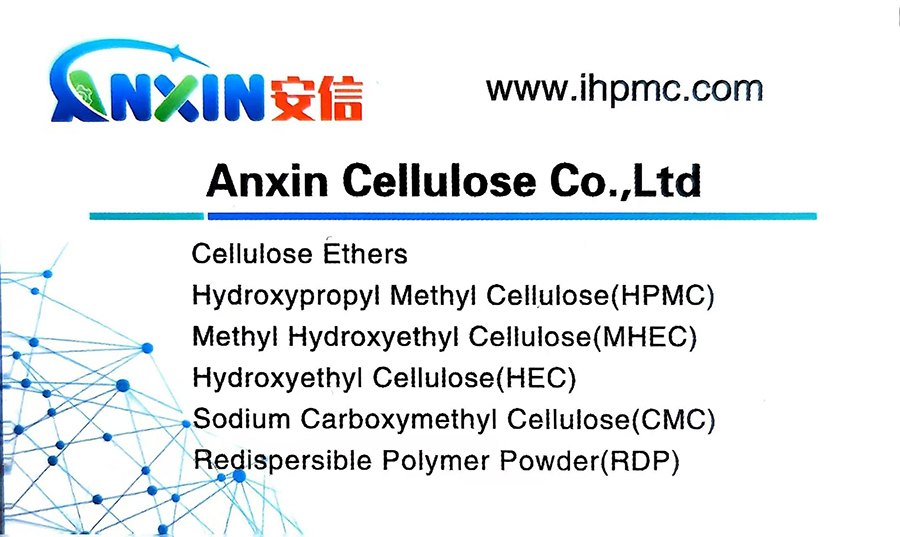Hydroxypropyl methylcellulose (HPMC) is a versatile polymer used in industries such as pharmaceuticals, construction, cosmetics, food, and personal care. The viscosity of HPMC plays a crucial role in determining its suitability for various applications. The viscosity is influenced by molecular weight, degree of substitution, and concentration. Understanding the appropriate viscosity grades is essential for selecting the right HPMC for specific industrial needs.

Viscosity Measurement
The viscosity of AnxinCel®HPMC is typically measured in aqueous solutions using a rotational or capillary viscometer. The standard test temperature is 20°C, and the viscosity is expressed in millipascal-seconds (mPa·s or cP, centipoise). Various grades of HPMC have different viscosities depending on their intended application.
Viscosity Grades and Their Applications
The table below outlines the common viscosity grades of HPMC and their corresponding applications:
|
Viscosity Grade (mPa·s) |
Typical Concentration (%) |
Application |
| 5 – 100 | 2 | Eye drops, food additives, suspensions |
| 100 – 400 | 2 | Tablet coatings, binders, adhesives |
| 400 – 1,500 | 2 | Emulsifiers, lubricants, drug delivery systems |
| 1,500 – 4,000 | 2 | Thickening agents, personal care products |
| 4,000 – 15,000 | 2 | Construction (tile adhesives, cement-based products) |
| 15,000 – 75,000 | 2 | Controlled-release drug formulations, construction grouts |
| 75,000 – 200,000 | 2 | High-viscosity adhesives, cement reinforcement |
Factors Affecting Viscosity
Several factors influence the viscosity of HPMC:
Molecular Weight: Higher molecular weight leads to increased viscosity.
Degree of Substitution: The ratio of hydroxypropyl and methyl groups affects solubility and viscosity.
Solution Concentration: Higher concentrations result in greater viscosity.
Temperature: Viscosity decreases with increasing temperature.
pH Sensitivity: HPMC solutions are stable within a pH range of 3-11 but can degrade outside this range.
Shear Rate: HPMC exhibits non-Newtonian flow properties, meaning viscosity decreases under shear stress.

Application-Specific Considerations
Pharmaceuticals: HPMC is used in drug formulations for controlled release and as a binder in tablets. Lower viscosity grades (100–400 mPa·s) are preferred for coatings, while higher grades (15,000+ mPa·s) are used for sustained-release formulations.
Construction: AnxinCel®HPMC acts as a water retention agent and adhesive in cement-based products. High-viscosity grades (above 4,000 mPa·s) are ideal for improving workability and bonding strength.
Cosmetics and Personal Care: In shampoos, lotions, and creams, HPMC functions as a thickener and stabilizer. Medium viscosity grades (400–1,500 mPa·s) provide an optimal balance between texture and flow properties.
Food Industry: As a food additive (E464), HPMC enhances texture, stability, and moisture retention. Lower viscosity grades (5–100 mPa·s) ensure proper dispersion without excessive thickening.
The selection of HPMC viscosity grade depends on the intended application, with lower viscosity grades suitable for solutions requiring minimal thickening and higher viscosity grades used in formulations that require strong adhesive and stabilizing properties. Proper viscosity control ensures effective performance in pharmaceuticals, construction, food, and cosmetics industries. Understanding the factors influencing viscosity helps in optimizing the use of HPMC for various industrial applications.
Post time: Feb-11-2025